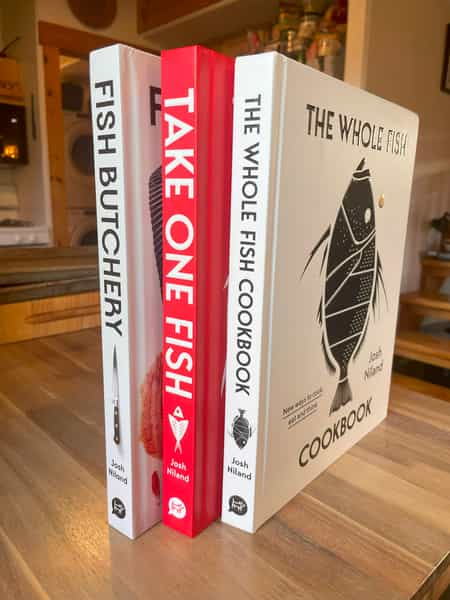I grew up in a small town in upstate New York that didn’t have much access to seafood in general, and I don’t think I’d be exaggerating to say virtually no access to truly good seafood at all. I think there are a lot of people who grow up like that. Unless you live in a major city, on a coast, or both, the seafood you have access to might be so lackluster that you could be justified in believing you simply don’t like seafood.
Indeed this is what I thought until I lived—and cooked—for some time in coastal New England. It turns out that seafood of pretty much any type can be amazingly delicious, it just needs to be properly handled and prepared. Most places without the infrastructure dedicated to supplying good quality fish and shellfish are doomed to suffer through sub-par specimens. Unfortunately, when seafood is sub-par it can come across as wholly unappetizing. Mediocre beef, chicken, or pork is still going to scratch the itch of your average meat eater, but mediocre fish and shellfish loses almost all of what makes it so magical when its dealt with properly.
When I moved to Chicago from Rhode Island in 2018, I found myself once again in a landlocked, far inland city with little access to great seafood. That's not to say there is none to be had in the city; it’s there, but it’s hiding. It hides behind the $450 per person price tag of high end sushi joints, or in one of only a handful of well stocked fish markets (and by well stocked, I mean quality not quantity). The problem for many people is that even if they do find one of these markets they find that the quality product is so much more expensive than what they find at their local grocery store it seems out of reach, or like it can’t possibly be worth the extra money.
Worse still, most people outside of coastal towns and big cities might not have even a single worthwhile fish shop within driving distance. That's certainly the case for me now that I’m back in upstate NY (unless you consider four hours to NYC driving distance, which I don’t). For us woebegone souls there is still the option of purchasing spectacular quality seafood from online fishmongers like BrowneTrading or True Fin Seafood. The problem with these is, again, a premium price tag, now compounded by the added cost of overnight shipping. Alack! Alas! What is one in search of a regular seafood fix, but possessed of only a modicum of dollars and cents to do?

Well fear not, dear reader, for the Aussie chef Josh Niland has made it his mission to help alleviate this problem with a collection of three books that hope to make regular eating of beautiful seafood not only more sustainable for the planet, but also our coin purses.
Niland takes a fairly radical approach to fish cookery, advocating for a zero waste (or close to it) approach. I feel like the term zero-waste gets thrown around a lot these days when it's at best an exaggeration, and at worst a whole-cloth fabrication, but in Niland’s case it applies pretty well. Exemplified by his inclusion in the books of recipes and techniques for the use of fish scales, bones, stomach, intestine, even the vitreous humor inside the eyes.
His first release, The Whole Fish Cookbook, includes introductions to many different ways of increasing the yield of a fish from the typical 30%-50% to something approaching 100%, as well as more esoteric methods for increasing shelf life like dry aging, seafood charcuterie, ike jime, and dry handling and processing. All of these are either totally novel approaches, or ideas that were previously so niche even lifelong professional seafood chefs may have never heard of them, or worse, have been taught that the were impossible or anathema to the idea of quality seafood.
Hopefully this post inspired you to dive in a little deeper to the preparation of quality seafood, and maybe even give buying a whole fish a shot instead of just the bits you need for one recipe. If we want to continue eating fish long into the future, shifting the way we think about its utilization is critical. And if you want some hands-on professional guidance on how to work with many different types of fish, I recommend checking out our upcoming Feast of the Seven Fishes class.
